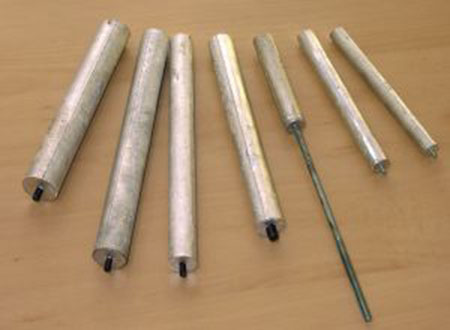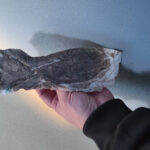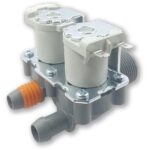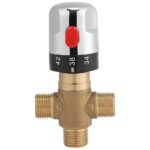The anode rod also known as the magnesium rod
The anode rod, also known as the magnesium rod, is a critical component of a solar water heater, with the primary purpose of protecting the system from corrosion and ensuring its long-term durability. This small but significant device works in conjunction with the parts of the solar system that come into contact with water, helping to prevent damage from corrosion and material wear.

How Does the Anode Rod Work?
The anode rod is typically made of magnesium, as magnesium is more reactive than the metal of the water heater (usually stainless steel or copper). When water inside the heater comes into contact with metal surfaces, the process of electrochemical corrosion begins, which can cause damage, particularly to the pipes or the heater’s tank. The anode rod acts as a sacrificial anode, absorbing the electrochemical energy and protecting the rest of the system.
In simple terms, the magnesium rod “attracts” corrosion to itself, sparing the more critical and expensive parts of the solar water heater.
Why Is the Anode Rod Important?
The presence of the anode rod in the system offers multiple benefits:
- Corrosion protection: Corrosion, especially on metal surfaces in contact with water, can lead to serious damage and reduce the lifespan of the solar water heater. The magnesium rod limits this corrosion, preventing system wear.
- Increased lifespan of the water heater: By using an anode rod, the lifespan of the solar water heater is extended, as it reduces the risks of corrosion-related damage to key components.
- Reduced maintenance and repair costs: Preventing corrosion through the anode rod reduces the likelihood of costly repairs or replacement of parts of the solar water heater, resulting in lower maintenance expenses.
When Should the Anode Rod Be Replaced?
The anode rod is not a permanent component. As it “sacrifices” itself to protect the rest of the system, it wears out over time and requires replacement. Typically, anode rods should be inspected every 1-2 years, and in cases where the water is particularly hard or the system is used frequently, replacement may be needed more often.
If you notice that the rod is worn or significantly reduced in size, it should be replaced to ensure that your solar system continues to function properly and remains protected from corrosion.
Conclusion
The anode rod is a critical component for protecting the solar water heater from corrosion and extending the system’s lifespan. Regular inspection and replacement when necessary are essential to ensure that the solar water heater operates efficiently and lasts for the long term.
- Improvements in the Placement of the Data Logger - 29 January 2025
- Solar Water Heater Statistics – December 2024 - 10 January 2025
- Washing machines with dual water supply - 24 December 2024











